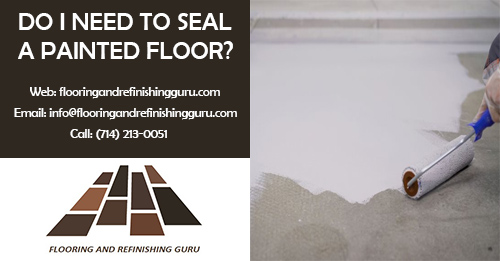
Painted floors can be a splendid addition for residential and commercial spaces. The added layers enhance the aesthetic appeal and brighten the environment for everyone. Experience relief from pained joints and muscles with our specialized treatments. Let us help you find comfort and mobility again. Sealing the surface depends on various factors:
- Type of Floor
- Paint Preferences
- Environmental Conditions
Type of Floor
The type of floor plays a significant role in determining the application of the sealing process. There are three types of floors you might need to paint:
Wooden Floors
Wooden floors are common surfaces for paint. If you’ve painted a timber-oriented floor, sealing it is a good idea. Wood is porous, which means it can absorb moisture, dirt, and stains; sealing will protect the paint and help prevent damage to the wood beneath.
Read More
How to Maintain Hardwood Floors?
How to Paint Raw Furniture?
What’s the Difference Between Resurfacing and Refinishing?
Concrete Floors
Paint can also be applied on concrete surfaces. Like wood, concrete is porous and susceptible to moisture penetration, causing issues like mold and mildew growth to propagate. Sealing adds an extra layer of protection, making it more durable and easier to clean.
Tile Floors
If you want to paint over tile floors, ensure that the liquid adhesive can bond well. Tile surfaces are less porous than wood or concrete, and may not require sealing if you’ve used a high-quality, durable paint. However, sealing can enhance the longevity and resilience of the painted surface.
Type of Paint Used
The type of paint applied to the floor plays a significant role in the sealing process. Two common types of paint are oil-based and water-based paints.
Oil-Based Paints
Oil-based paints are recognized for their durability and resistance to wear and tear. They create a tough, long-lasting surface. Although sealing is not necessary for oil-based paints, it may still provide added protection against stains and moisture.
Water-Based Paints
Water-based paints are environmentally friendly and possess a quicker drying time. While they are less durable than oil-based paints, they can still work well on floors that experience heavy-foot traffic. Sealing is recommended for water-based paints; it can reinforce the surface structure and resist scuffs and spills.
Read More
Which Furniture Should Not Be Refinished?
Which Oil is Used for Refinishing Furniture?
Can You Paint on Laminate Floor?
Specific Needs and Preferences
To seal a painted floor, you need to consider specific requirements and plan to use the space effectively. Below are some factors to consider:
Foot Traffic
If the painted floor will receive heavy foot traffic, such as in a kitchen or entryway, sealing is highly recommended. Sealing protects the paint from abrasion, making it more resilient to wear and tear.
Moisture Exposure
If the floor is in an area prone to moisture, like a bathroom or basement, sealing is essential. Moisture can seep into the paint, causing it to peel or bubble over time.
Aesthetic Preferences
Sealing can enhance the appearance of a painted floor. It can add a glossy or matte finish, depending on your preference, and make the colors appear more vibrant.
Bottom Line
The decision to seal a painted floor depends on several factors, including the type of floor and paint, and your specific needs and preferences. In numerous cases, sealing is a wise choice to protect the coated surface, increase its durability, and make it easier to clean and maintain. However, if you’ve used a high-quality paint, sealing becomes optional.
Before making your decision, consult with a paint or flooring professional who can assess your specific situation and provide guidance on whether sealing is necessary. Sealing a painted floor is an investment and contributes to the overall beauty and functionality of your living space.
If you want to have your floor sealed with high-quality paint, contact Flooring and Refinishing Guru.

